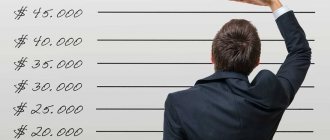Inventory is the basis for the entire turnover of the company. It is these objects of labor that allow the creation of products. And it’s worth getting to know them better in order to establish smooth operation.
In the production process, most of the inventories are used as objects of labor. In each production cycle (the period from the start of the production process to the moment the finished product is released), they are completely consumed.
By the way, the cycle is the defining concept in this case. After all, only those objects that are completely lost relate to the topic under discussion. In other words, these are consumable resources, raw materials, catalysts of the procedure that are spent.
In contrast to multi-cyclic items, for example, equipment, a machine. After all, its lifespan at the enterprise is determined not by the cycle, but by the shelf life, which theoretically can be equal or even shorter than the cycle range, but is still not included in it.
Concept and classification of inventories
To understand the essence of this term, it is enough to understand the fact that these are consumables. That is, items that completely lose their total value are given to the final product. Which is the product, the result of the whole process. It turns out that these elements represent the main line of expenses - and therefore, costs. Of course, here we should add many other sources of expenses, such as transportation, registration, payment of duties and taxes, excluding VAT.
The second aspect that defines the term is one-time use. They participate in production only once. Even if there are leftovers after a cycle, it just means that not all resources were used. But once a material is used to create a product, it can no longer be reused.
It is logical to assume that this is primarily a raw material. From which the product is created. But besides it, there are many more different objects that, one way or another, are involved in the cycle. If we talk about MPZ, there are different concepts and classifications. But the main method of grouping is always the same - dividing into main and auxiliary. Further, they can be classified by role in the process, by technical characteristics and other parameters. But they always distinguish between main reserves, which form the future product, and auxiliary ones. You can further classify them by role in the process, by technical characteristics and other elements. But they always distinguish between main reserves, which form the future product, and auxiliary ones. They do not directly become part of the product, but without them the procedure will still be impossible.
Display in accounting
Primary documentation and other accounting registers constantly record the state of balances at the beginning of new periods. Changes and edits are made only due to the identification of inconsistencies during inspections.
If there were no deviations, then arrival and departure are processed as usual in the form of balances for two key dates. This is the beginning and end of the year. It is considered inappropriate to withdraw the full balance more often. But this does not mean that data is not collected in other periods. It just doesn't display a full report.
What does this category include?
First of all, the main reserves. These are raw materials that become part of the product. It is noteworthy that this concept is more often used when it comes to agricultural products. In other cases, it is customary to call the base materials. Sources can be varied. Some products are created from literally a couple of items, while others require dozens or even hundreds of types. Next are the spare parts. That is, some elements that are part of it, but are not created in production or, in principle, participate in a different cycle. The last aspect is semi-finished products. Already almost finished products that are purchased from the counterparty. And also applied to the production process.
Additional objects are also included in the inventory. They are necessary for work, but the product is not created from them. They can directly affect both the substances used to apply markers and not affect it as a whole. For example, consumables for maintaining property, maintaining it, protecting it from the external environment, containers, packaging items, even workwear. At the same time, it is worth strictly separating packaging that is part of the product and those that belong to additional elements. Thus, glass containers containing gherkins are part of the product. But the cardboard box in which transportation is carried out, as well as the tape with which the boxes are fixed, are additional objects.
What is included in goods and materials
First, let's go through the general categories. Let's look at the varieties:
- Objects for implementation. The finished ones, which no longer require any processing, can only be sent for sale.
- Related materials necessary to complete the creation cycle, but not part of it. This is also the company's property, which must be scrupulously controlled.
- Raw materials, necessary resources. Sometimes these are just constituent elements, in other cases, this is, in principle, the entire basis of the created object. In fact, there is no serious difference for accounting.
Now let's move on to a more specific classification. And let's see what inventory items are:
- Inventories used to create new products.
- Raw materials.
- Fuel.
- Containers, consumables.
- Spare parts.
- Directly products for sale.
Classification
In fact, inventories include almost everything on the site, in addition to human resources and equipment. Often, if we talk about technical gradation, the following types are distinguished:
- Raw materials, as already noted, depend on the specifics of the business entity.
- Semi-finished products. Moreover, acquired from outside. That is, they were not created on this site. And even if there is another plant, which is also part of this company, that supplies semi-finished products, they are still considered acquired.
- Spare elements.
- Fuel. They are used to provide energy to equipment and transportation vehicles.
- Inventory. Regardless of the price factor and dimensions.
- Tara. As well as a different way of containing, packaging, and transporting objects.
- Special clothing and equipment for employees. Including safety devices that are used once.
It is worth understanding that the most complete composition of industrial inventories is a larger list, and only its top categories are given here. Each of them at a specific enterprise is usually subdivided into dozens more points. And a third level of separation may well take place. Therefore, it is often very problematic to correctly systematize this entire array. You have to use strict accounting regulations, constantly enter data, and also carry out various checks in a timely manner. In part - inventory and audit to verify the actual availability of the subject of labor with the documentary one.
Basic
So, what does such MPZ refer to? These are all the working capital assets that are used to create a product. Two key factors necessary for production are materials and human labor.
Auxiliary
Everything you need for the smooth operation of the production process. But at the same time not participating in the creation. Often most of these items are used for storage, transportation, and protection. As well as the employees themselves involved in the work.
For clarity, let's format it like this:
| The basis | Auxiliary |
| Raw materials | Fuel |
| Materials | Tara |
| Semi-finished products | Inventory |
| Accessories | Packaging elements |
Classification of MPZ
Depending on the functions that the assets in question perform, they are divided into several main groups.
The groups are as follows:
- raw materials and base materials - form the material basis of products, include objects of labor from which products are made;
- auxiliary materials - used to influence raw materials and base materials to impart certain properties and characteristics to manufactured goods, or for the care and maintenance of tools;
- purchased semi-finished products - are raw materials and materials that have undergone certain processing, but are not finished products; together with basic materials form the material basis of the product;
- fuel - is divided into several types: technological is used for technological purposes, motor fuel is used for refueling, economic fuel is used for heating;
- containers and packaging materials – used for packaging, moving and storing materials and finished products;
- spare parts – used to repair and replace worn-out parts of equipment and machines.
In addition to the listed groups, a separate group includes returnable production waste - remnants of materials that were formed during the production process, and raw materials that have partially lost their properties. Within each group, materials are further divided by type, brand, grade and other characteristics.
It should be noted that the division of materials into main (basic) and auxiliary is conditional, and often depends on the amount of materials used in the production process.
Gradation according to technical characteristics
It is not customary to separate these elements by quality and cost. The main aspect is purpose. But division is also often allowed based on technical aspects. Flammable substances belong to one category, plastic equipment to another, metal equipment to a third. The dimensions of such a classification depend entirely on how many different items are used in a particular production. Not only auxiliary, but also basic ones are divided according to technical characteristics.
You should also know about a special group. The materials include MBP. Literally, these are low-value or wearable objects. What will belong to the first is a complex question. In fact, the cost is first determined, and in the comparative characteristics the low-value ones are already identified. So, everything depends on the raw materials at the enterprise. But objects that wear out quickly are those with a service life of less than a year. Naturally, the cycle at most enterprises will be much shorter. But still, such wear-out non-consumable parts are usually taken to the MPZ.
Inventory planning
The relevance of planning material and production assets of organizations is due to the fact that delays in procurement can lead to disruption of production processes, increased overhead costs and other unpleasant consequences. Purchases made ahead of schedule can also cause certain problems, for example, increase the load on working capital and warehouse space.
Determining the need for inventories allows you to avoid overproduction and unnecessary financial costs. In addition, planning makes it possible to create a cash flow budget (income and expenses of the organization).
When calculating the needs for materials, it is advisable to divide them into the following groups:
- group of stocks of current storage (includes the updated part of stocks that are regularly and evenly used during the production process);
- group of seasonal storage stocks (includes materials associated with seasonal fluctuations in the production process, for example, the supply of forest materials in the autumn and spring periods);
- group of special-purpose reserves (includes materials related to the specifics of the activity).
To determine the volume of required orders, you need to know how many similar materials were used in previous periods and how many materials are needed.
To do this, you need to know how much time is needed to fulfill orders and what the annual volume of demand (consumption) is.
Proper planning should ensure maximum utilization of warehouse space, minimum storage costs and optimal repeat order conditions.
Nomenclature and accounting unit
As already mentioned, it is fundamentally important to keep complete records of all the products that are used in the production cycle. In this case, each specific object is assigned its own number. General information is entered into the nomenclature, that is, into the list of basic materials that were involved.
All information is recorded before and after the creation stage. Discrepancies are verified, surpluses and deficiencies are identified. After all, according to technical regulations, it is strictly noted how many product units are spent on the creation of a particular product. After all, inventories are the organization’s production reserves, and if strict control is not maintained, then unaccounted overexpenditure will appear. As well as possible theft at the enterprise, which will directly affect the final profit and financial stability of the organization.
Reflection in the balance
Regardless of what specific goods received will be intended for in the activities of an economic entity, it is always taken into account in the balance sheet according to the key factor. This is the cost, the totality of the actual costs incurred by the company. Often there are no problems with the definition, because the purchase and sale agreement with the counterparty easily provides all the necessary information.
Another point is that inventories include those that have already lost their value. For example, during transportation. Or they are outdated or excluded from circulation. Then the main assessment will be the selling price, not the purchasing price.
And in addition, some materials not received through a purchase and sale agreement. In the first case, this is a direct contribution from the founders in the form of capital replenishment. When capitalizing, you should be guided by the price recommendations of the founders themselves. There are also often cases of gratuitous delivery. In the form of a share, as an option. Then, for capitalization, you will need to calculate the current market price at the time of acceptance and focus on it. Moreover, if the assessment requires additional monetary costs, such as payment for the work of an appraiser, these costs are also included in the cost of the products received.
Grade
There are two main options for how delivery can be assessed. The first way is to look at the list price. The second is for the purchase price. Typically, an organization's inventories are included (included) in general supplies. Along with all other goods that the company receives.
Registration price
In other words, the price of the object that was entered in the counterparty’s accounting sheet is taken into account. Most often, the method is used if there is no counterparty, and the organization supplies the material directly from its own branch or a second production site.
Actual cost accounting
In this case, you will have to identify the amounts of all expenses that were spent on receiving the goods. And their sources can be very different. Moreover, part of the costs that are associated with unforeseen situations do not relate to the original cost, but go to the balance of transportation costs, for example.
Cost components
So, let's take a more specific look at how you can understand how much money an enterprise has incurred. To enter each product item received, during capitalization you need to identify a cumulative figure that takes into account expenses regardless of the source. After all, inventories in production are an item that requires increased control.
- Direct payment to the supplier. That is, the fulfillment of their contractual obligations under the purchase and sale transaction. The size is calculated, naturally, based on the price specified in the initial contract.
- Various trade duties that have been added. Their volumes already depend on logistics. From the path the product took until it was delivered to the production site.
- Delivery price.
- Taxes that have not been refunded.
- Costs for various consulting, security and other services. Which may be required during the delivery process.
- The cost of remuneration of hired workers who carried out loading, unloading, and sorting in the warehouse.
- Payment for intermediary services.
This is a sample list. In each specific case it can be supplemented, become larger or smaller. It all depends on the length and complexity of the path that the goods have traveled.
Inventory accounting
Considering the fact that any losses under this item entail large losses, including production shutdown, it is necessary to control availability in all ways. This means constantly checking the availability of the necessary units on site, as well as building a competent spending strategy. In other words, you need to constantly know how many consumables are left and how to use them correctly.
And for this task, software products from Cleverence will be useful. They allow you to simplify both processes to an elementary component. Smart programs know what is included in production inventories, how to properly account for them, and put them on the balance sheet. In a couple of clicks, they do a job that would take hours. Moreover, software and equipment are adapted to any specificity. And unlike many analogues, they are perfectly adapted specifically to our legislation and requirements for accounting and tax reporting.
For example, you can choose specialized software for data collection terminals with a built-in barcode scanner “Sklad 15”. It is designed to automate all commodity accounting operations in warehouses, regular and address storage. You can carry out operations such as inventory, arrival at the warehouse, as well as work with cells and pick up orders.
The need for inventory
While we were analyzing what inventory materials mean, we often mentioned this particular type of verification. And for good reason, because it is fundamentally important in this area.
The meaning of inventory is the constant control of all current assets. Often this involves planned control, which is designed to verify the actual availability and records in documents. The manager personally hands over documentation and inventories that indicate the number of balances at the moment. And the commission he formed is conducting an inspection. They identify whether there are any shortcomings or, on the contrary, an unaccounted surplus.
In addition to scheduled inspections, an inventory is often carried out when there is a change in responsible persons, company reorganization, or various types of emergencies, such as fire. In addition, if theft was detected in a warehouse, then the inventory must calculate the volume of the criminal act.
It is worth understanding that with a large turnover of assets, this procedure is lengthy and very difficult. You can simplify it to a minimum using software solutions from Cleverence. They not only turn a routine audit into a quick and easy action for employees, but also eliminate excess human costs. After all, just one employee with a smartphone, or better yet, a TSD, is enough, because the phone is not always reliable, and the data collection terminal is much more secure for working, for example, in a warehouse, to carry out the procedure. In addition, various types of solutions are offered: both individual offers that are personalized specifically for the type of business activity and all the features of the “internal kitchen” of a legal entity, and packaged solutions for any company.
Analysis
The analytical work is often very extensive. Data such as the average value of all values, their rates of growth or decline, and key points of sharp changes in the value and volume of production are taken as starting points. It reveals how the quality of inventories affects the duration of turnover, which specific positions are currently most important for the company, and where additional purchases need to be made.
All this work is very voluminous, but as already mentioned, products from Cleverence will greatly simplify it. After all, the company’s applications already know all the basic methods of calculations and conducting detailed analysis. You just need to enter the required numbers.









